- What are the high-Pass filters?
- How does a high-pass filter work?
- What does a high-pass filter do in a circuit?
- What is a high-pass filter symbol?
- What are the type of high-pass filter ?
- Different examples of high-pass filters
- Time response and Frequency response of hpf
- Cut-off frequency of hpf
- Transfer function of high-pass filter
- Comparison between high-pass and low-pass filter
What is a High Pass Filter?
“High pass filter is a circuit that attenuates all signals of frequencies which belong to the below cut-off frequency and gives a constant output or gain above this particular frequency.”
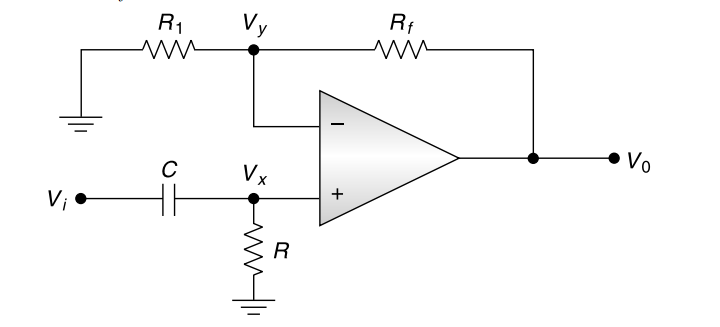
In the above figure, the CR circuit does the ‘filtering’ work. The op amp is linked with a voltage follower. Now, the feedback system is also incorporated to cancel out the offset voltage according to the property of the operational amplifier.
Here,

The equation can be calculated using the property of ideal operational amplifier which states that an operational amplifier has infinite gain. Here, f represents input signal’s frequency.

Where= HPF’s passband gain,
f=Input signal’s frequency (It is also the cut-off freq.),


Operation of a High pass filter:
Here, the gain-magnitude equation does the job of verification at a lower level of frequency.

At f = fc,

- At f>>fc,

High Pass Filter Characteristics
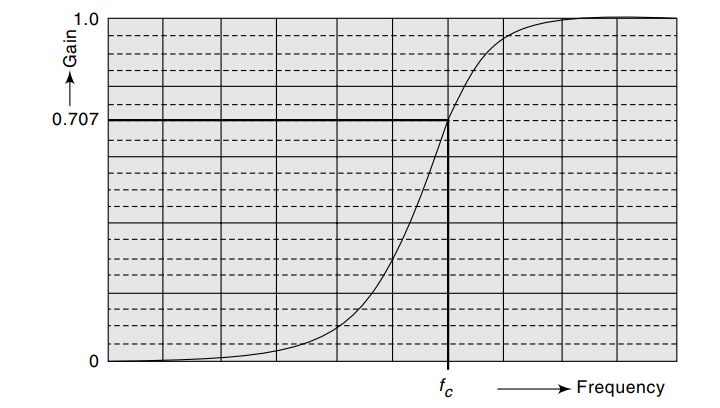
Types of High Pass Filter:
- Passive High Pass Filters
- Active High Pass Filters
An active high pass filter is nothing but a circuit contains an active component such as a transistor, an operational amplifier(op-amp), etc. Using these devices gives us more efficiency.
Advantage of High Pass Filter :
Active high pass filters have several advantages over other types of filters. The major advantages are given below.
- 1. Amplification of weaker signal,
- 2. Efficient transmission of signal (with minimal loss),
- 3. Efficient performance when used in a multistage filter.
Working of high pass filter.
The most straightforward and simple type of filter is the First order Filter. It has a single reactive component. The transforming process is quite simple. You have to add just an op-amp.
Operational amplifiers have several configurations. Different configurations have different attributes and impact in the filter’s performance.
Now, note of the roll off rate of a first order filter. Roll off rate is defined as the rate at which the gain of a filter changes in the operational stop band. The rate represents the steepness of the curve and it also help us to find out the increase rate of the growth.
The first order filters come up with a growth rate 20 dB/decade or in other terms, it can be said the growth rate is 6db/Octave.
High Pass Filter Transfer Function
We know that the capacitor’s impedance varies with the frequency. That is why electronic-filters comes up with response which are dependent on frequencies.
The impedance of a capacitor is typically given by the following equation.

Where, s= σ +jω, ω represents the angular frequency.
The transfer Function is derived using some basic theorems of network theory.
The Transfer Function is given by ratio of output to the supplied input. The typical representation of transfer function is given as follow.

The typical transfer function is :

Where,
a1 represents Amplitudes of signals
ω0 represents Angular cut-off frequencies
Application of Active High Pass Filter:
- To transmit higher frequency in case of video related filters.
- The frequency is changed based upon various waveforms.
- The active ones finds application in the CROs, generators.
Passive High Pass Filters:
Why are passive high pass filters used?
A filter is called passive when there won’t be any external power, and the input signal also remains unamplified due to the passive components present in the Filter. The passive components may be the same as low pass, but the overall connection is always reversed. The passive components are Resistor(R) and Capacitor(C), so it is an RC filter combination.
The name “passive,” “high,” “pass,” and “filter” suggest that the Filter will only pass the higher frequency, i.e., it will block the low frequencies.
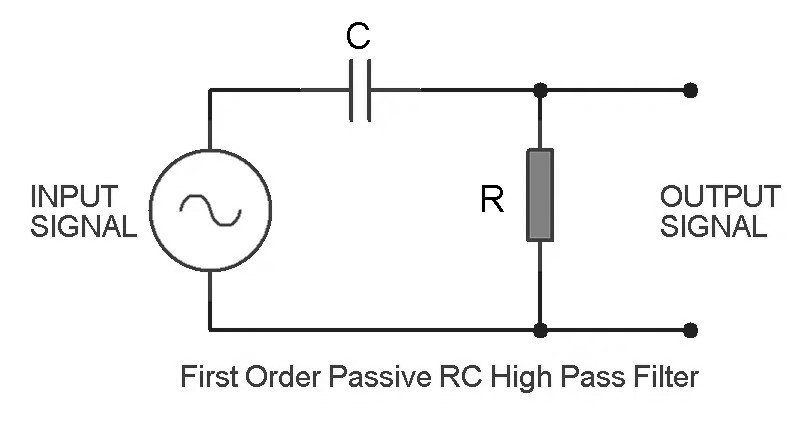
In the above circuit, the output voltage is determined across the resistor(R); when the frequency increases, the reactance of the capacitor decreases, so the output and gain increases simultaneously.
The formula to calculate the frequency of the RC circuit is,
f=1/2πRC
How to build an RC High Pass Filter:
To build an RC HPF, the components we need are as follows,
- A function Generator
- A 10nF ceramic capacitor
- A 10 K ohm resistor
Frequency:
(0.00000001F) = 15,293 Hz, the greater the output, the more signal gets attenuated.
If we give an AC signal input to the circuit from a function generator and sets the signal to a low frequency, the capacitor will block the voltage signal. So the low-frequency signals which get blocked do not reach past the capacitor. The high-frequency signals keep going and pass to the output.
Passive High Pass Filters are used in:
- Audio amplifiers
- In speaker systems
- In different music control systems etc.
First Order High Pass Filter vs. Second Order High Pass Filter
- The second-order high-pass filter comprises two different reactive components.
- First-order HPF has a transfer function of the first order; on the other hand, second-order HPF has a transfer function of second order.
- The first order filter differs from the second order filter on the basis of the stopband. The slope of the graph of a second order is typically the algebraic double of the first order.
Passive RL High Pass Filter:
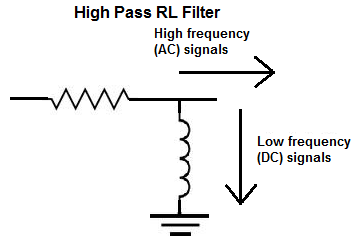
This circuit consists of a resistor and an inductor. The inductor in the circuit passes all the lower frequencies and reduce the voltages across it. It also keeps the output voltage closer to the input voltage.
There is a frequency response in dB below the circuit for a specific range of frequencies.
The lower cut-off frequency for an RL high-pass filter is determined by the inductor and the parallel combination of RF and RL, by the formula:

Where, REQ = RF||RL
How to build an RL High Pass Filter:
To build an RL HPF, we need,
- A function Generator
- A Resistor
- An Inductor
- Oscilloscope
For making the circuit, we may use a 470mH inductor and a 10KΩ resistor.
The circuit forms a high-pass filter and helps the high-frequency signals to pass through to the output. It also filters the low-frequency signals through the inductor.
Butterworth High Pass Filter:
What is a Butterworth Filter?
“Butterworth filter is probably the first and best-known filter approximation.”
The Butterworth filter is created to get a smooth frequency response graph in the passband.

Circuit Image –
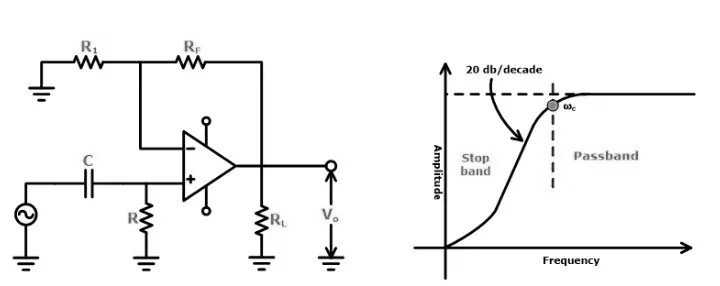
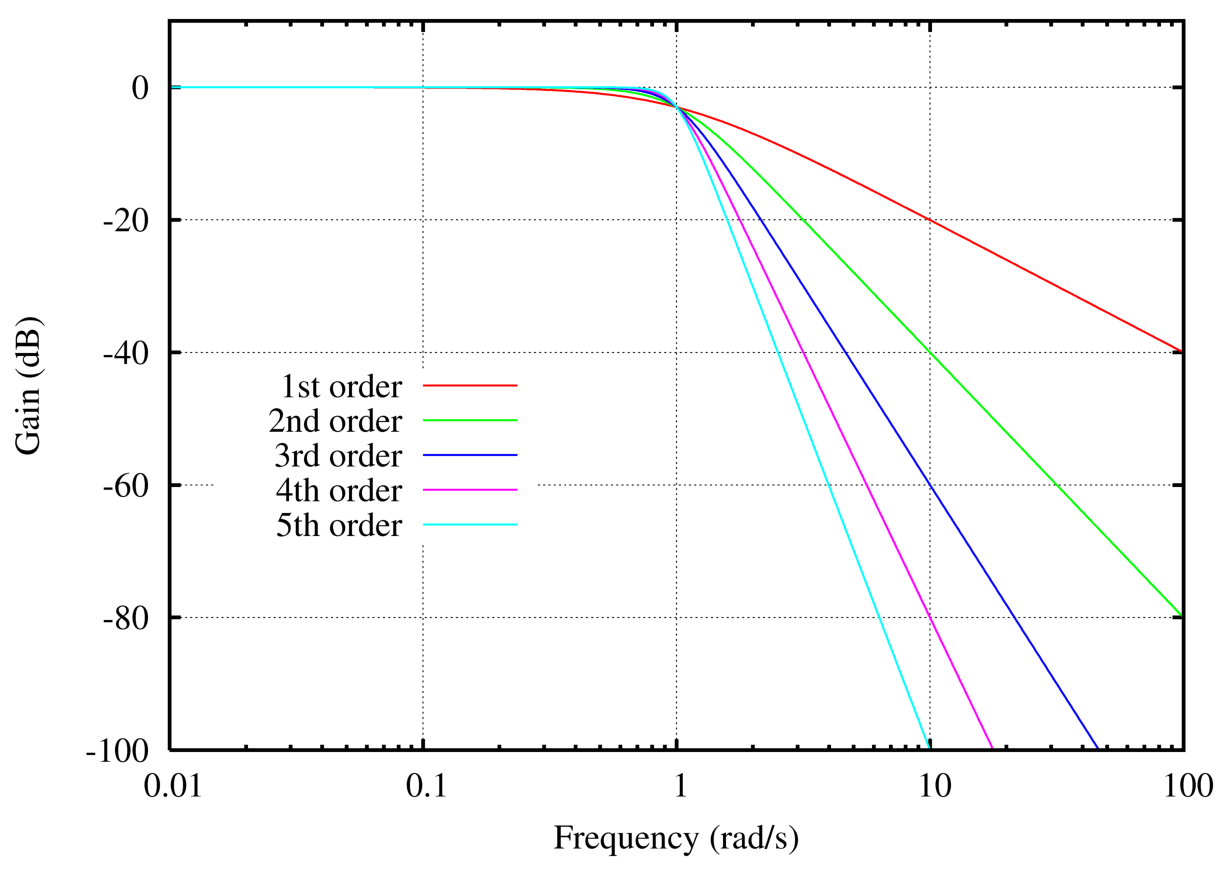
Image credit: Omegatron, Butterworth orders, CC BY-SA 3.0
Chebyshev High pass Filter:
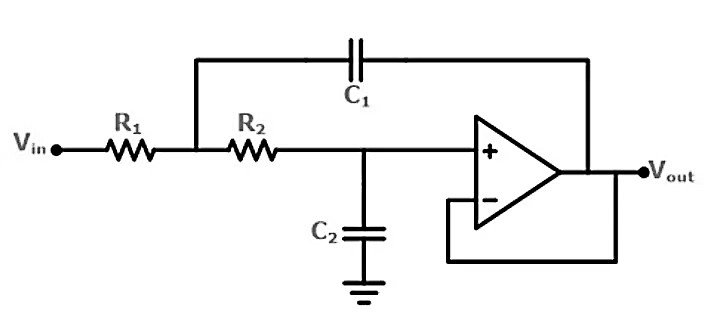
The Butterworth filter is created to get a smooth frequency response graph in the passband. Filters can be classified into two categories. The categories are ‘Chebyshev Filter’ and ‘Inverse Chebyshev Filter’.
The filter response comes out to be response of a Butterworth filter, if the ripple value is fixed at 0%. Typically the ripple value is fixed at 0.5% for applications in digital filters.
Chebyshev frequency response

Image Credit: Pfalstad / CC BY-SA
Image Credit: Alessio Damato, Electronic linear filters, CC BY-SA 3.0
High Pass Filter vs. Low Pass Filter:
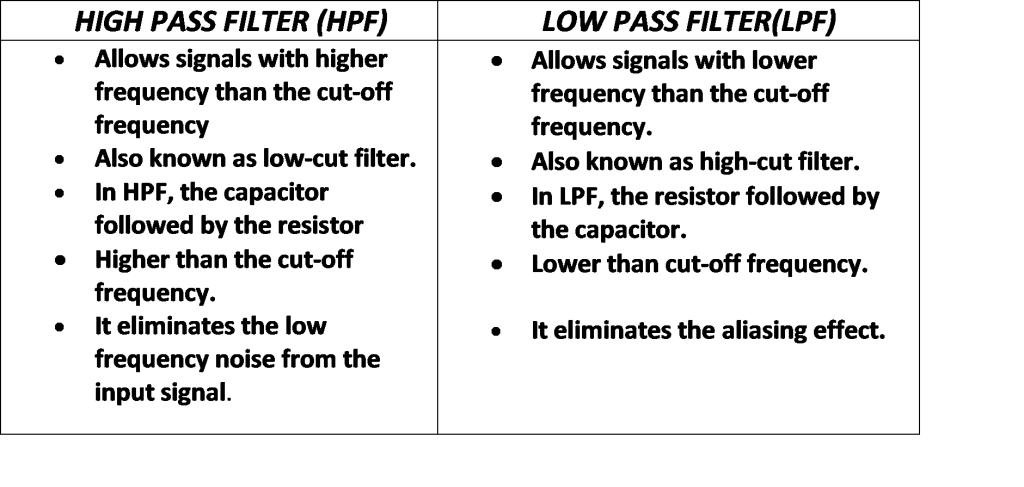
Why should we use the High Pass Filter?
- High pass filters are excellent for any electronics or electrical operations.
- HPF allows us to gain staging by providing more control over the process or experiment.
- Cutting off unwanted noise is another best feature so far.
Write some advantages of a High Pass Filter.
- Have a sharp roll-off response.
- The broadcasting power is powerful enough to receive the frequency of the necessary channel.
- The filter has advantages in audio processing applications as it blocks the Direct Current voltage from getting amplified.
To read more about electronics click here
